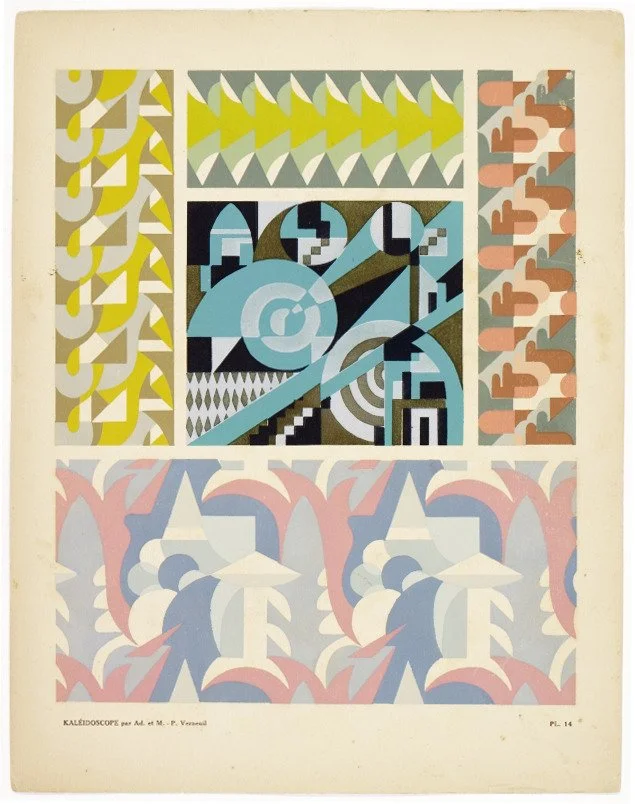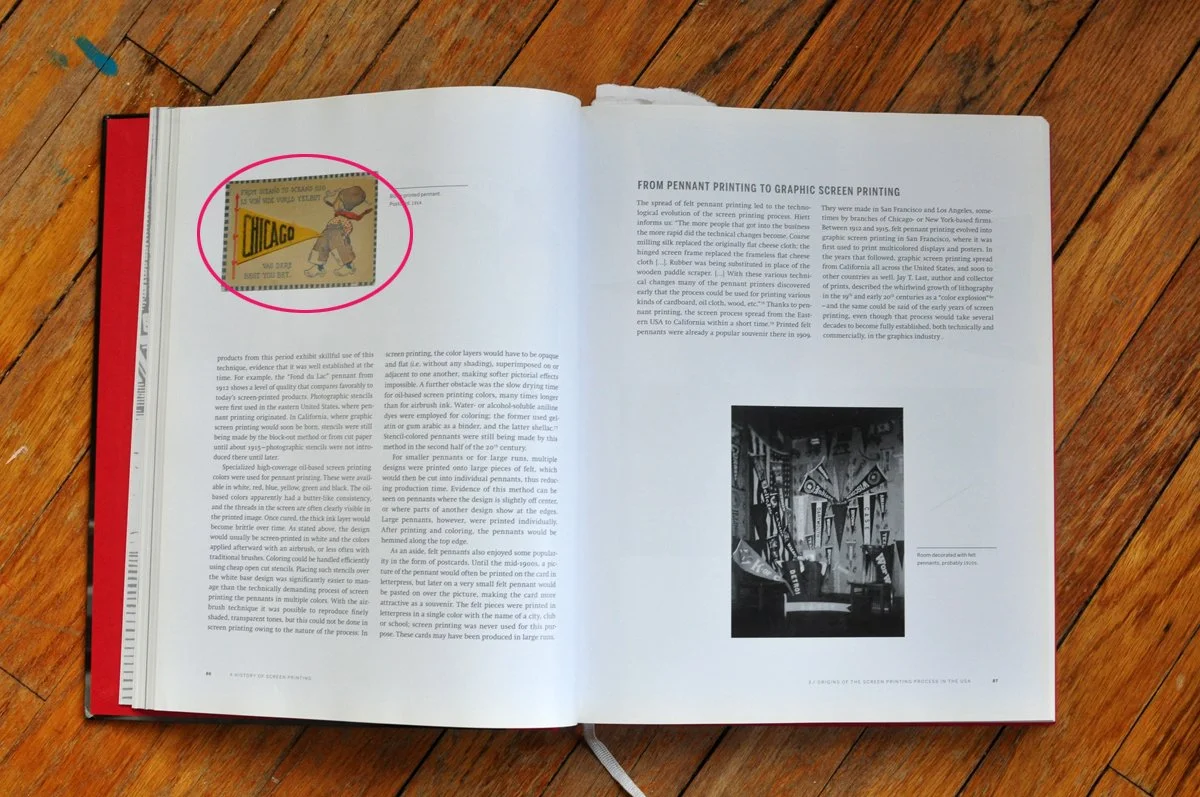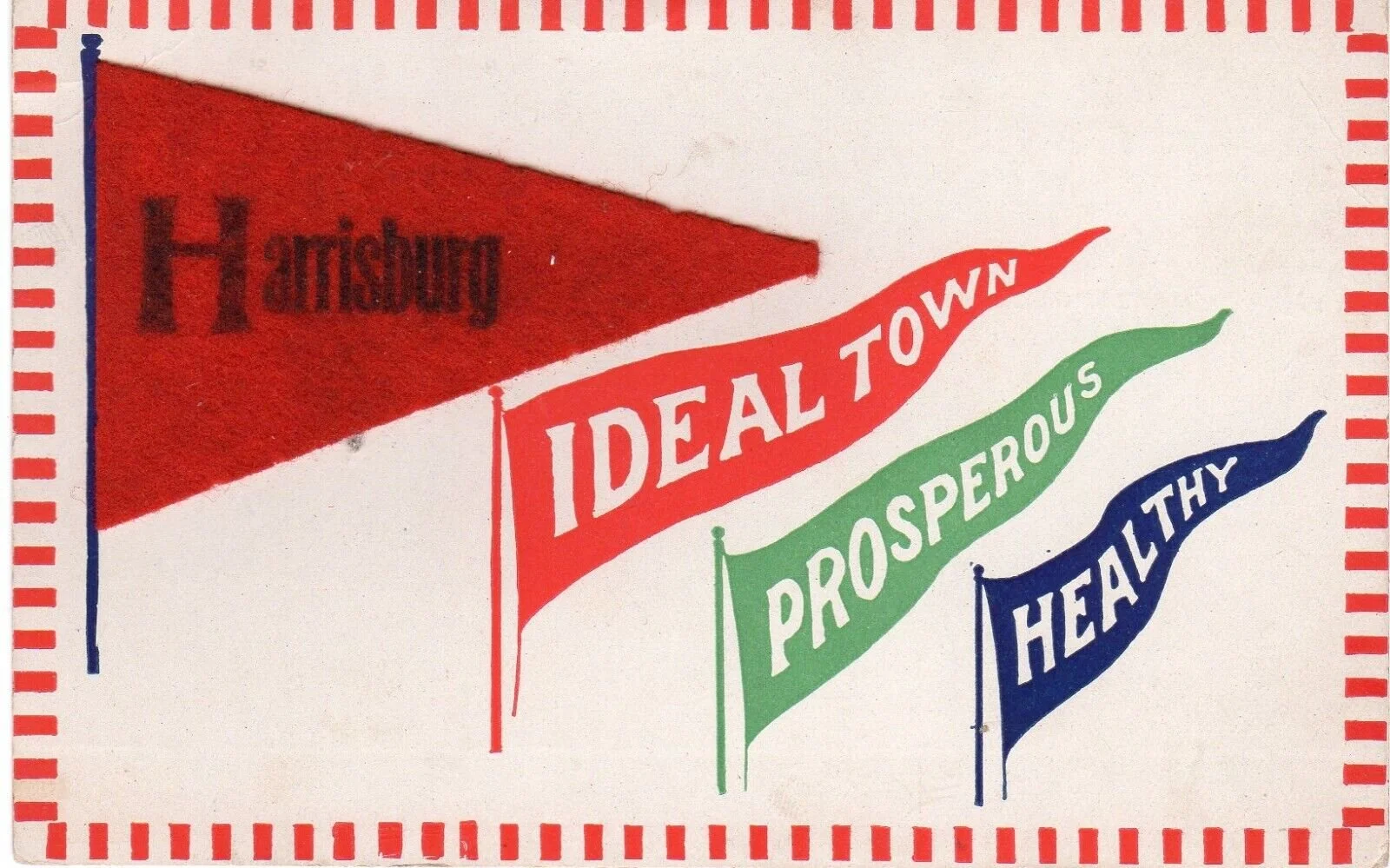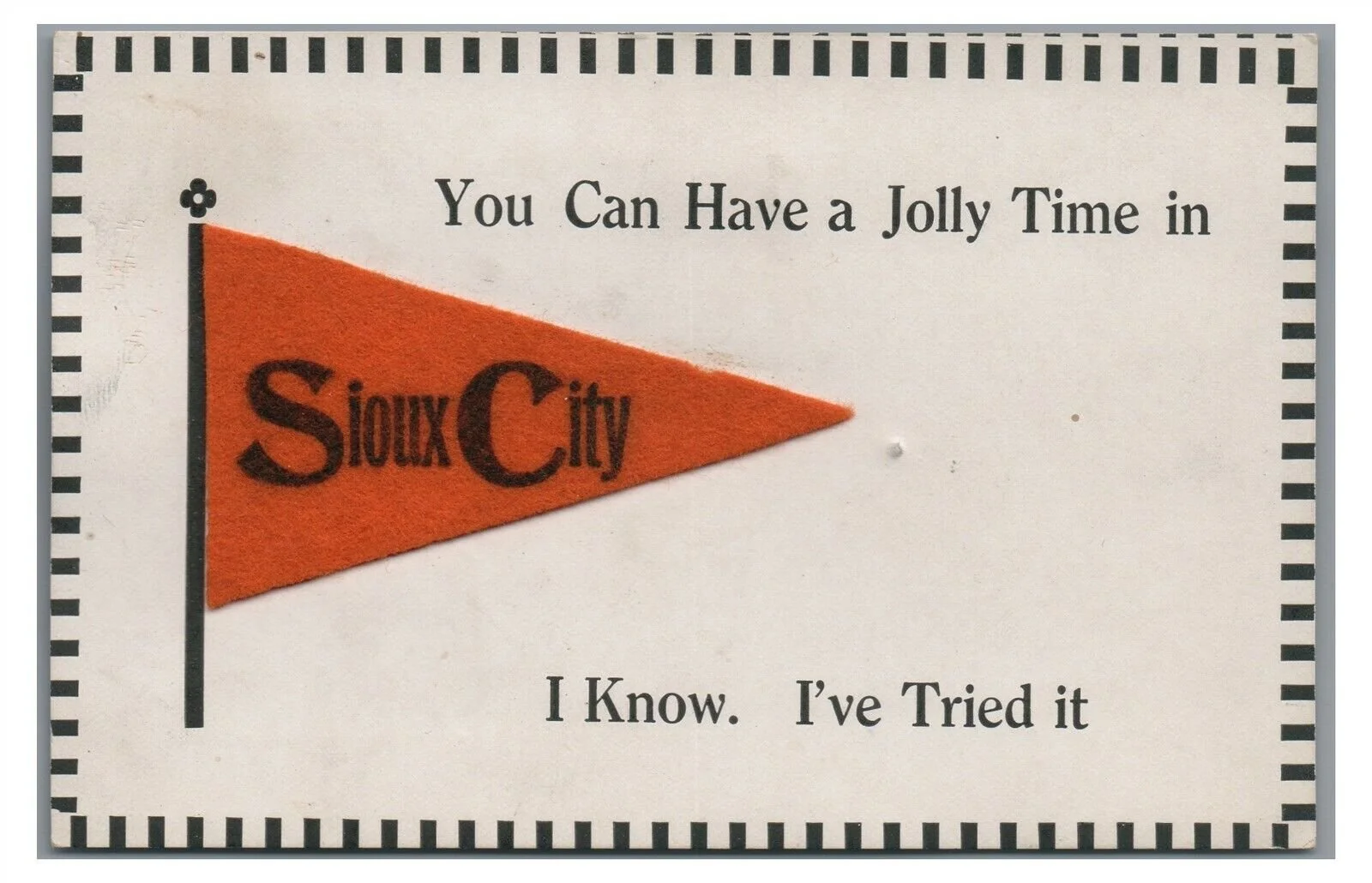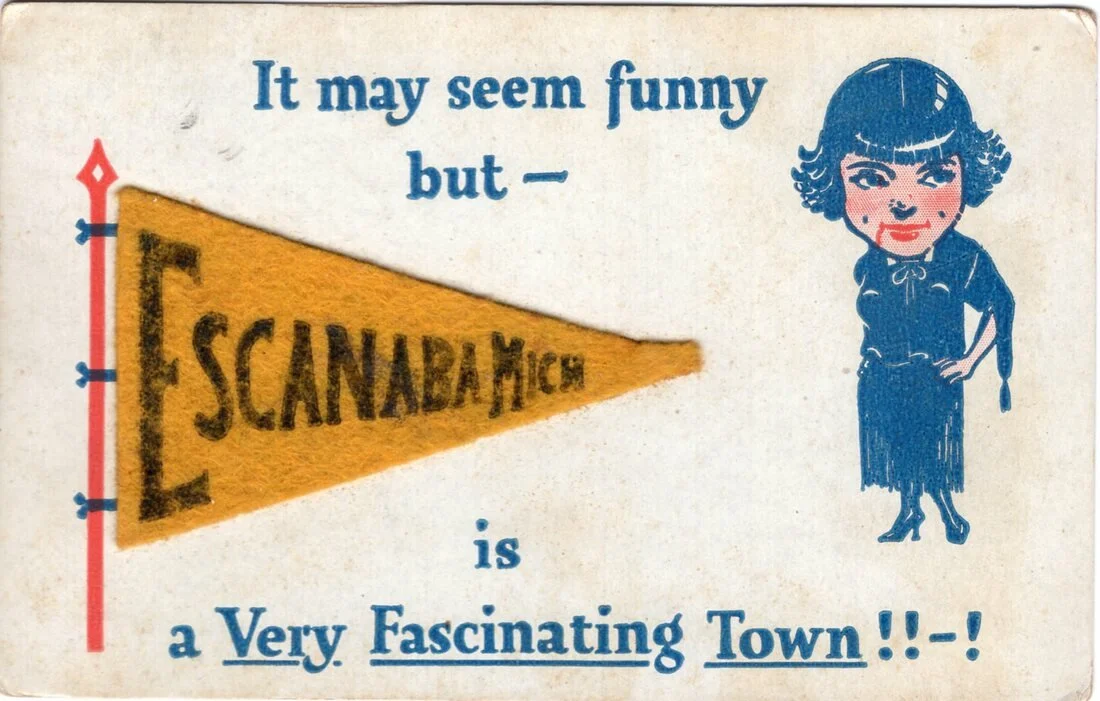Secrets, innovations, and mystery – who knew screen printing had such a complicated past! I recently read A History of Screen Printing: How an Art Evolved into an Industry by Guido Lengwiler, which my mom gifted me a few years ago. One of my summer goals was to finally read this weighty, comprehensive book, and I did it!
In the introduction, Lengwiler, a teacher of screen printing in Switzerland, writes that the purpose of the book was to bring the mysterious and fragmented history of screen printing into one volume. After 15 years of research, he put together this very detailed, nearly 500-page history of screen printing from the late 19th century through WWII.
Full of great illustrations and reproductions of old photos, patents, and historical screen printing handbooks, the book includes details on “the first screen printing job,” layer-by-layer breakdowns of 12-color prints from the 1920s/30s, and the material evolution of mesh, squeegees, and inks. The stories of familiar names like Ulano and Nazdar are told – we learn the history of these companies that are still around today (I use Ulano emulsion!).
The book sent me down a lot of rabbit holes (pochoirs by Maurice Verneuil! books by Hiett & Zahn! more on that in a future post), with many more to come. And this is my favorite kind of book – the kind that branches out into many more research paths and opportunities to learn.
One of Maurice Verneuil’s pochoir prints in Kaleidoscope (1925) src
One interesting bit I learned is how the popularity of pennants as souvenirs in the early 20th century eventually led to the evolution of screen printing. At first the letters on pennants were sewn on, but eventually someone figured out printing would be a more efficient way to produce them, beginning with block printing the letters and eventually leading to screen printing them.
"As an aside," the book includes a little bloop about felt pennant postcards, which, because of the Postcard Club I’m running through Patreon, piqued my interest:
From the book:
As an aside, felt pennants also enjoyed some popularity in the form of postcards. Until the mid-1900s, a picture of the pennant would often be printed on the card in letterpress, but later on a very small felt pennant would be pasted over the picture, making the card more attractive as a souvenir. The felt pieces were printed in letterpress in a single color with the name of a city, club or school; screen printing was never used for this purpose. These cards may have been produced in large runs.
That's all that's said about felt pennant postcards in the book, so of course I went down a digital rabbit hole looking for more information. And I picked up a couple from eBay. This one is my favorite:
And the back, postmarked 1914:
The writing is German and says something like, "Dear Parents, I will be here Monday to Tuesday night I will be in Marietta the day after noon."
Felt pennant postcards were just one of the many interesting things from the book that I’m looking forward to exploring more of. Here's a look inside the book, and I definitely recommend it to anyone interested in printmaking.


